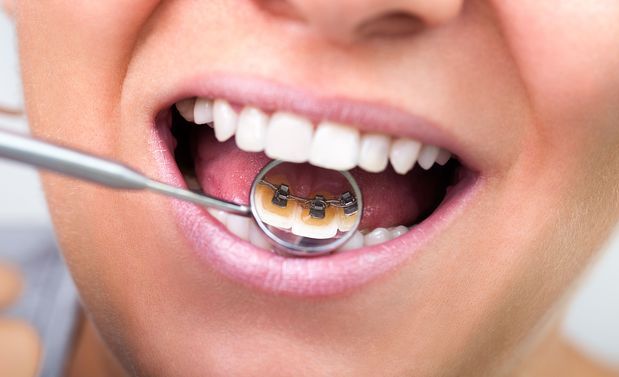Lingual Braces: A Discreet Treatment to Realign Your Teeth
Attached to the back of the teeth, lingual braces placed at our New York, NY dental office are a discreet and effective orthodontic option to straighten your smile. Dr. Ernest Robertson at Harlem Center for Aesthetic Dentistry offers several orthodontic treatments to meet a range of needs and goals. During a consultation, he can determine which treatment is best for you.
Benefits of Lingual Braces
 Traditional braces are very noticeable. They are made from metal and placed on the visible surface of a patient’s teeth. Some patients may hesitate undergoing treatment with braces due to their highly visible nature. If you are looking for a discreet orthodontic solution, lingual braces may be right for you. Lingual braces are placed behind your teeth, making them virtually invisible. They can also benefit patients who play sports (due to a reduced risk of injuries to the inside of the mouth) or wind instruments (due to reduced interference with mouth movement).
Traditional braces are very noticeable. They are made from metal and placed on the visible surface of a patient’s teeth. Some patients may hesitate undergoing treatment with braces due to their highly visible nature. If you are looking for a discreet orthodontic solution, lingual braces may be right for you. Lingual braces are placed behind your teeth, making them virtually invisible. They can also benefit patients who play sports (due to a reduced risk of injuries to the inside of the mouth) or wind instruments (due to reduced interference with mouth movement).
Like traditional braces, lingual braces apply continuous pressure on the teeth to gently guide them into proper position. Total treatment time can take anywhere from 18 to 36 months, depending on the patient’s orthodontic needs.
When you come in for a consultation at our dental practice, Dr. Robertson will discuss your dental goals before advising whether this is the best option for you.
Lingual braces are placed behind your teeth, making them virtually invisible.
Candidates
If you are concerned about preserving aesthetics throughout your orthodontic treatment, lingual braces may be the right treatment for you. At your initial visit, Dr. Robertson will determine whether you are a candidate after a thorough exam. Lingual braces are not suitable for patients with small teeth or excessive bite problems. Additionally, because they are custom-made, lingual braces are more expensive than traditional braces.
Procedure
Dr. Robertson will take an impression of your teeth, which is then sent to the dental lab to guide the fabrication of your custom brackets. This process takes about six weeks as individual brackets are made for each specific tooth. Once the brackets are returned to Dr. Robertson, he will use a special process to cement the brackets onto your teeth.
Special Care for Your Lingual Braces
Due to the placement of lingual braces behind the teeth, patients may not notice food debris and plaque buildup around the brackets. Thus, it is essential to maintain good oral care habits. Patients should brush twice a day for at least two minutes per session, floss daily, use an oral irrigation device to flush out food from teeth and brackets, and use a fluoride rinse. Patients should also be diligent about undergoing dental exams and professional cleanings every six months. Lingual braces may irritate the tongue, so patients can place dental wax on the lower brackets to alleviate any discomfort. Patients may also experience difficulty enunciating initially, but over time, you will get used to the presence of the brackets and become able to speak clearly. Eating certain foods may be challenging at first, and it is advised to stick to semi-solids such as soups for the first few days.
Schedule Your Consultation
If you are a patient who needs orthodontic treatment, but do not want to affect your appearance, lingual braces may be a good option for you.
Schedule a consultation with Dr. Robertson